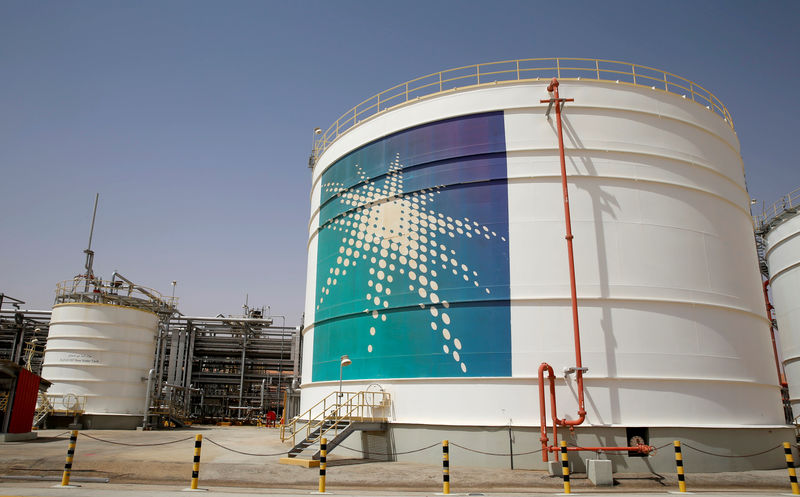By Barani Krishnan
Investing.com -- The oil market is witnessing a tug of war between two narratives -- the Saudis (bull) and the Iranians (bear). At the moment, the Saudi narrative is winning.
Crude prices jumped almost 4% Tuesday as the bulls played up for a second day remarks by Saudi Arabia's Energy Minister Abdulaziz bin Salman that the kingdom could cut production "anytime" at the OPEC+ oil producing coalition that it controlled. Abdulaziz had been responding to written questions put forth by Bloomberg when he said that, and the timing was convenient enough to snuff out a selloff that had been choking longs in the market since the start of the week.
Iran, meanwhile, dropped another bomb -- metaphorically -- on the market when it gave up a key condition barring the inspection of its sites that it had previously insisted on during negotiations aimed at reinstating its 2015 nuclear deal with world powers. The agreement from seven years ago is critical to ending U.S. sanctions on Iranian oil exports, to pave the way for Tehran's legitimate return to the oil market.
Previously, Iran had demanded that as a condition of re-entering the nuclear deal, known as the Joint Comprehensive Plan of Action, the International Atomic Energy Agency had to close its investigation of undeclared nuclear material found at Iranian sites in 2019. But Iran has now dropped that demand, a senior official of the Biden administration told CNN on Tuesday.
Effectively what that meant is that Iran had less to hide from the IAEA amid accusations that the Islamic Republic had amassed enough capacity, including uranium enrichment, at those sites to build an atomic bomb. For the record, Tehran has maintained that its nuclear program was for civil uses like power generation and not for making weapons. Saudi Arabia, Israel and other arch rivals of the Islamic Republic, of course, do not believe that story.
There's another reason why the Saudis do not want the nuclear deal reinstated for Iran: The potential of an oil glut that could cause within OPEC+. Industry sources estimate that Iran could bring an additional one million barrels per day or more into the market. Some say that's a drop in the bucket for the output OPEC+ has already lost from Western sanctions on Russian oil exports triggered by the Ukraine war. But with a likely U.S. recession that could spill over into Europe, the additional barrels from Iran might end up as oversupply, especially if oil imports from top buyer China continue to suffer as they had over the past month.
Still, the narrative of a nuclear deal reinstatement for Iran was overpowered by the threat the Saudis could muscle in on OPEC+, forcing it to slash production to mitigate the barrels Tehran would bring.
"A weakening U.S. economy should be bad news for oil, but today’s soft economic readings suggest that OPEC+ will easily be able to justify production cuts soon," said Ed Moya, analyst at online trading platform OANDA.
By 14:00 ET, West Texas Intermediate, the benchmark for U.S. crude, was up $3.45, or 3.8%, at 93.81 a barrel. WTI fell to as low as $86.60 on Monday.
WTI remains down almost 6% since the start of August, extending the back-to-back loss of more than 7% in July and June.
Brent, the London-traded global benchmark for crude, was up $3.64, or about 3.8%, at $100.12. Brent is down more than 8% since the start of August, after a 6.5% drop in July and slide of more than 4% in June.
Market participants were also on the lookout for U.S. weekly oil inventory data, due after market settlement from API, or the American Petroleum Institute.
The API will release at approximately 16:30 ET (20:30 GMT) a snapshot of closing balances on U.S. crude, gasoline and distillates for the week ended Aug. 19. The numbers serve as a precursor to official inventory data on the same due from the U.S. Energy Information Administration on Wednesday.
For last week, analysts tracked by Investing.com expect the EIA to report a crude stockpile drop of 933,000 barrels, versus the 7.06-million barrel reduction reported during the week to Aug. 12.
On the gasoline inventory front, the consensus is for a draw of 1.46 million barrels over the 4.64 million-barrel decline in the previous week.
With distillate stockpiles, the expectation is for a climb of 580,000 barrels versus the prior week’s gain of 766,000.
